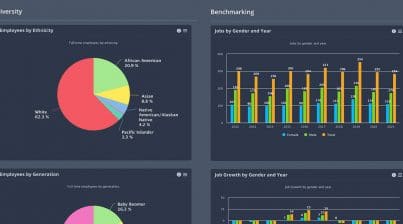As an HR professional, you are aware that there are different types of employee turnover. Your organization is likely losing employees – are they quitting, retiring, or being terminated? And, do you know why?
Here are a few employee turnover statistics that may surprise you:
- In 2020, the national average annual turnover rate was 57.3%
- On average, companies lose 18% of their workforce to turnover each year
- In 2018, the overall cost of voluntary employee turnover amounted to $617 billion
- Approximately 60-70% of all turnover is voluntary
- 33% of employees quit their jobs within the first 90 days of employment
- There are over 10 million job openings in the United States
- 16.45% of employees quit within their first week of employment, 17.42% within their first month, and 14.48% within their first six months
In this article, we will define voluntary vs. involuntary turnover briefly. Then we’ll dig deeper into the voluntary employee turnover types and how they impact your business.
Voluntary vs. Involuntary Turnover
Involuntary employee turnover happens when employees are terminated from their positions.
Voluntary employee turnover happens when employees willingly choose to leave their positions.
Let’s focus on some of the most common categories of voluntary turnover:
- Job Abandonment: This happens when an employee doesn’t call or show up to work for a set period of time. They’ve abandoned their post.
- Another Job: This is when an employee finds employment at a different company. Typically, we see the reason for this move is money-related or bad management-motivated. If your organization is typical, this category is probably the most significant percentage of your voluntary turnover. Sound risk mitigation for this type of turnover is determining if you are paying your employees enough for your industry, job role, and region. Or, you may need to research and investigate your managers to see if there are personality clashes, leadership conflicts, or other issues that need to be remedied.
- Personal Reasons: This could include health reasons, handling family issues, and even a change in priorities in their personal life, such as returning to school, relocating to another state, or wanting a change in industry.
- Job Dissatisfaction: An employee leaves because they are not satisfied with their position or the organization. Out of these four reasons, this is something your organization probably has the most control of. By finding out the causes of your workforce’s dissatisfaction – through surveys, discussions, coaching – you can start making positive changes in the work environment fairly quickly.
A Work Institute report from 2020 shows 20% of employees leave their jobs due to frustration over a lack of growth, job advancement, and development opportunities. Using your HR data and analytics to drill down to the real reasons your employees leave will help inform and direct your employee retention and career growth strategies. And a reduction in employee turnover will have a positive effect on your organization’s bottom line!
The Costs of Voluntary Turnover
Business leaders must realize the cost of replacing employees is not merely the price of advertisements or headhunter fees. Filling vacant positions, onboarding, training, and lost productivity are expensive costs for organizations, especially when employees that leave have in-demand, specialized skills or valuable institutional knowledge and intellectual assets. So let’s also consider these factors that are included in the costs:
- Paying other employees overtime to handle the role while it’s unfilled
- Decreased productivity due to loss of workgroup synergy
- Decrease in morale, engagement, and satisfaction by the team
- Hiring temporary help while recruiting a replacement
- Conducting exit interviews
- Recruiting costs
- Onboarding
- Training
It’s been estimated that each employee that leaves costs their employer about 33% of their annual earnings. SHRM has estimated that the average cost to replace a salaried employee is six to nine months of that employee’s salary. And if they were a senior-level manager, top performer, or had specialized skills, costs could even reach many times the employee’s annual salary.
Calculating Employee Turnover Percentage
To calculate employee turnover, you divide the number of employees who left the company in a specific range of time by the total number of employees you started with at that beginning range of time. The number is the percentage of turnover.
For example, if you start the year with 100 employees and during that year, five employees left voluntarily, and seven left involuntarily, you end up with a voluntary annual turnover rate of 5/100 or 5%. Your involuntary turnover rate is 7/100 or 7%. When you add 5% and 7% together, you have an annual turnover rate of 12%.
Reducing the employee turnover rate is one of the crucial tasks of team leaders. Why? Because a high turnover rate implies that the organization is incurring high costs of operations due to recruiting new employees, the costs of training and development, the loss of productivity, and possibly even the loss of business. In the long run, a company will likely lose its competitive advantages in the marketplace.
Reducing Employee Turnover
This article isn’t all doom and gloom! But, here’s the good part…there are key tactics that can be implemented to improve the management of employee turnover! Here are a few you can try:
- Hire the Right People: Focus on hiring the right people for the right positions right from the start. It is essential to write detailed job descriptions and have a clear idea of the types of candidates you want for the role, but it’s critical to use HR data to become more strategic in screening candidates. Many companies also use personality, work environment preferences, and leadership style assessments to determine if the candidate possesses exemplary character and competencies for the position. When you get the right fit, there or more chances that the employee will be satisfied with that job.
- Retain Key Employees: Concentrate on retaining key employees because as stated above, costs begin to add up when employees leave. When you retain your most experienced, seasoned, and talented employees, you help ensure your company’s strength. And guess what? Employee retention is not just the function of the HR department. Employee retention is everyone’s responsibility through employee recognition, regular performance feedback, fair rewards according to employees’ contributions, and even increasing employee retention with HR data.
- Create Positive Relationships: Good, open, and honest two-way communication between managers and employees not only reduces problems but builds trust in relationships. Companies can also focus on building support systems, developing programs for stress management, and empowering employees to participate actively and contribute to organizational goals. Additionally, the relationship between an employee and employer (or direct supervisor) is critical. Supervisors can reap great rewards and improve employee job satisfaction by asking questions, becoming involved, and being accountable.
- Increase Job Satisfaction: Employees who feel valued and cared for tend to have higher levels of commitment to their employer, are more dedicated to their responsibilities, are more plugged in and engaged in the organization, and are even more innovative. Reward that! And rewards don’t necessarily always have to be monetary. Rewards can also be praise, mentoring, professional development, managing special projects, scheduling flexibility, etc. Get creative!
Wrapping It Up
We are living in a highly competitive labor market! The Great Resignation is still in full force, and employers have difficulty filling vacant positions. Ensure you know how to measure, monitor, and correct your voluntary employee turnover. If you need help getting started, Employee Cycle can help you gather your HR data, analyze it, and leverage that power with all of your metrics in one place with real-time actionable data. Find out how by scheduling a free demo.












